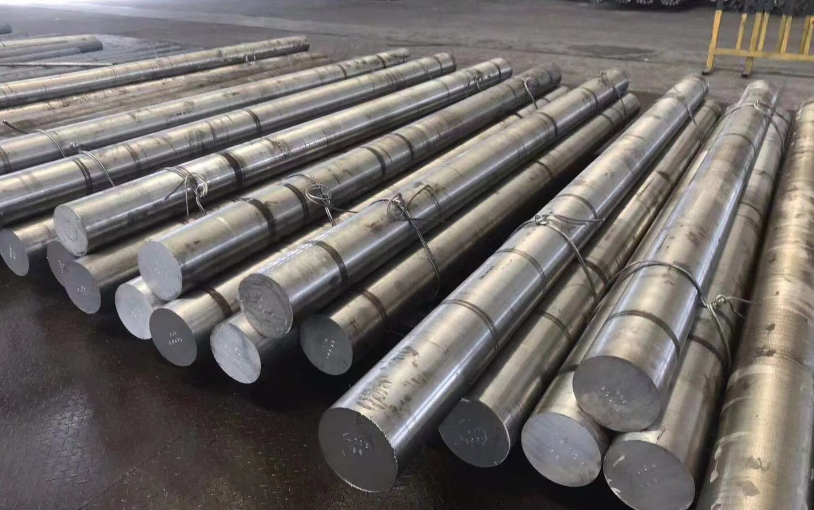Como experto experimentado no campo da metalurxia de Sino de aceiro inoxidable, I have a profound understanding of the nuances that differentiate various grades of stainless steel. Today, I will delve into the intricacies of two popular stainless steel grades: aceiro inoxidable 309 vs 321.

Aceiro inoxidable 309 vs 321 - Cal é a diferenza?
Stainless steel, a corrosion-resistant alloy of iron, crômio, and other elements, has found widespread application in various industries due to its exceptional durability and resistance to rust. Among the different grades of stainless steel, 309 and 321 stand out for their unique characteristics and uses.
Let’s start with Stainless Steel 309. This alloy is primarily austenitic, meaning it has a microstructure that is non-magnetic and highly ductile, allowing it to be easily formed and welded. The high chromium and nickel content of 309 stainless steel give it excellent oxidation resistance and corrosion resistance, especially in high-temperature environments. As a result, it is often used in welding applications where the base metal has a similar composition or when joining dissimilar metals. Its ability to withstand high temperatures without losing its strength or corroding makes it a suitable choice for furnace parts, heat exchangers, and other components that operate at elevated temperatures.
On the other hand, Stainless Steel 321 is also an austenitic stainless steel, but it has a crucial addition: titanium. The addition of titanium stabilizes the steel against chromium carbide precipitation, which can occur during welding or high-temperature service. This stabilization prevents the formation of intergranular corrosion, enhancing the alloy’s corrosion resistance, particularly in carbide-forming environments. Therefore, 321 stainless steel is often employed in applications that involve continuous exposure to high temperatures, such as aircraft exhaust systems, industrial furnaces, and petrochemical processing equipment.
Now, let’s delve deeper into the key differences between these two grades.
Stainless Steel 309 vs 321 – Chemical Composition
The most significant difference lies in their chemical composition. Stainless Steel 309 has a higher chromium and nickel content than 321, which accounts for its superior oxidation resistance. On the other hand, the addition of titanium in 321 stainless steel enhances its resistance to intergranular corrosion.
Stainless Steel 309 vs 321 – Mechanical Properties
The mechanical properties of these two alloys also differ slightly. While both are known for their strength and ductility, 309 stainless steel typically exhibits higher tensile strength due to its higher chromium and nickel content. However, the titanium stabilization in 321 stainless steel may result in improved creep resistance at high temperatures, making it more suitable for long-term service in elevated temperature environments.
Stainless Steel 309 vs 321 – Weldability
Weldability is another crucial aspect that sets these two alloys apart. Both 309 and 321 stainless steels are generally considered to be easy to weld. However, the titanium stabilization in 321 stainless steel helps to prevent weld decay, a common issue in welding austenitic stainless steels. This means that welded joints in 321 stainless steel are less likely to suffer from corrosion or mechanical degradation over time.
Stainless Steel 309 vs 321 – Cost
Cost is another factor that needs to be considered when choosing between these two alloys. Generally, Stainless Steel 309 is more expensive than 321 due to its higher chromium and nickel content. However, the cost difference may vary depending on market conditions and the specific requirements of the application.
Stainless Steel 309 vs 321 – Application
Finally, the choice between Stainless Steel 309 and 321 ultimately depends on the specific application and operating conditions. 309 stainless steel is often the preferred choice for welding applications where oxidation resistance is paramount, such as joining stainless steel to carbon steel or for high-temperature service where corrosion resistance is not the primary concern. On the other hand, 321 stainless steel is more suitable for applications that involve continuous exposure to high temperatures and require excellent corrosion resistance, particularly in carbide-forming environments.
Conclusión
In conclusion, Stainless Steel 309 and 321 are both excellent alloys with their own unique characteristics and applications. Understanding the differences between them is crucial for selecting the most appropriate material for a specific application. Whether it’s the superior oxidation resistance of 309 or the enhanced corrosion resistance of 321, choosing the right stainless steel grade can ensure optimal performance and durability in various industrial settings.
Thank you for reading our article and we hope it can help you to have a better understanding of the differences between Stainless Steel 309 vs 321. If you are looking for Stainless Steel 309 & 321 supplier and manufacturer online now, we would advise you to visit Sino Stainless Steel.
As a leading supplier and manufacturer of stainless steel products from Shanghai China, Sino Stainless Steel offers customers high-quality Stainless Steel 309 and 321, chapas decorativas de aceiro inoxidable, tubos de aceiro inoxidable, tubos de aceiro inoxidable, tiras de aceiro inoxidable, bobinas de aceiro inoxidable, placas de aceiro inoxidablee barras de aceiro inoxidable a un prezo moi competitivo.
 :+86-18621535697
:+86-18621535697  :export81@huaxia-intl.com
:export81@huaxia-intl.com